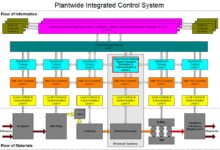System Crasher: 7 Shocking Truths You Must Know Now
Ever experienced a sudden system crash that wiped hours of work? Meet the ‘system crasher’—a silent digital saboteur lurking in software, hardware, or human error. Let’s uncover what it really is and how to stop it.
What Exactly Is a System Crasher?

The term system crasher might sound like something out of a cyberpunk novel, but it’s a real and often devastating phenomenon in computing. At its core, a system crasher refers to any factor—be it software, hardware, or human action—that causes a computer system or application to fail unexpectedly, leading to a complete shutdown or freeze.
Defining the Term in Technical Context
In technical terms, a system crasher triggers a condition where the operating system can no longer function safely. This is often referred to as a kernel panic on Unix-based systems or a Blue Screen of Death (BSOD) on Windows. These events occur when the system encounters a critical error from which it cannot recover.
- A system crasher disrupts normal operations by exploiting system vulnerabilities.
- It may originate from faulty drivers, memory leaks, or incompatible software.
- The impact ranges from minor inconvenience to complete data loss.
“A system crash isn’t just a glitch—it’s a breakdown in the delicate balance between hardware and software.” — Dr. Elena Torres, Systems Engineer at MIT.
Common Misconceptions About System Crashers
Many people assume that system crashes are always caused by viruses or malware. While malicious software can indeed act as a system crasher, the reality is far more nuanced. In fact, most crashes stem from benign sources like outdated drivers or overheating hardware.
- Myth: Only hackers create system crashers. Reality: Poorly coded apps can crash systems unintentionally.
- Myth: Crashes only happen on old computers. Reality: Even high-end systems are vulnerable under stress.
- Myth: Restarting fixes everything. Reality: Underlying issues often persist post-reboot.
Types of System Crashers: From Software to Hardware
Not all system crashers are created equal. They come in various forms, each exploiting different weaknesses in a computing environment. Understanding these types is crucial for prevention and diagnosis.
Software-Based System Crashers
Software-related system crashers are among the most common. These include bugs in operating systems, application conflicts, and memory leaks. A single poorly written program can bring down an entire system by consuming excessive resources or triggering kernel-level errors.
- Memory leaks: When an app fails to release RAM after use, leading to eventual system freeze.
- Driver incompatibility: Outdated or buggy drivers can destabilize the OS.
- Recursive loops: Code that calls itself endlessly can max out CPU usage.
For example, a Linux kernel update in 2021 introduced a race condition that caused random reboots on certain hardware configurations—classic behavior of a software-based system crasher.
Hardware-Induced System Crashes
Hardware failures are another major source of system crashes. Unlike software issues, hardware-related crashers are often permanent unless the faulty component is replaced.
- Failing RAM: Can cause unpredictable crashes and data corruption.
- Overheating CPUs/GPUs: Thermal throttling or shutdowns to prevent damage.
- Power supply issues: Voltage fluctuations can destabilize the entire system.
A study by Backblaze revealed that hard drive failure rates spike after three years of use, making aging hardware a silent system crasher.
Human-Caused System Crashers
Sometimes, the system crasher is not a machine or code—but a person. Misconfigurations, accidental deletions, or forced shutdowns can all lead to catastrophic failures.
- Incorrect BIOS settings: Overclocking without proper cooling can cause instant crashes.
- Force-quitting critical processes: Terminating system services manually can corrupt the OS.
- Installing untrusted software: Freeware bundles often include hidden crash-inducing components.
How System Crashers Exploit Vulnerabilities
Understanding how a system crasher gains leverage is key to defending against it. These exploit vectors vary widely but often follow predictable patterns in both enterprise and personal computing environments.
Memory Corruption and Buffer Overflows
One of the oldest and most dangerous methods used by system crashers is the buffer overflow. This occurs when a program writes more data to a memory buffer than it can hold, spilling into adjacent memory spaces.
- Can overwrite critical system instructions.
- Often exploited in denial-of-service (DoS) attacks.
- Still a top vulnerability in C/C++ applications due to lack of built-in bounds checking.
The infamous PrintNightmare vulnerability in Windows Print Spooler is a prime example of how a buffer overflow can turn a routine service into a system crasher.
Kernel-Level Exploits
The kernel is the heart of any operating system. When a system crasher targets this layer, the consequences are immediate and severe. Kernel exploits often result in privilege escalation or complete system instability.
- Rootkits can hide within kernel modules, silently destabilizing the system.
- Poorly signed drivers may introduce malicious code directly into kernel space.
- Zero-day exploits in kernel code can crash millions of devices before patches are available.
“The kernel should be sacred ground. Once compromised, the entire system is at risk.” — Linus Torvalds, Creator of Linux.
Firmware and BIOS Attacks
Firmware is often overlooked in security discussions, but it’s a prime target for advanced system crashers. Because firmware runs at a level below the OS, it’s harder to detect and remove.
- BIOS/UEFI malware can persist even after OS reinstallation.
- Supply chain attacks may embed crash-inducing code before devices reach users.
- Improper updates can brick a device permanently.
The Intel Management Engine (ME) has faced scrutiny for its deep system access, making it a potential vector for firmware-level system crashers.
Real-World Examples of System Crashers
History is filled with notorious cases where a system crasher brought down critical infrastructure, cost millions, or exposed systemic weaknesses in technology.
The 2021 Facebook Outage: A Global System Crasher
On October 4, 2021, Facebook, Instagram, WhatsApp, and Oculus went offline for nearly six hours. The culprit? A system crasher in the form of a misconfigured Border Gateway Protocol (BGP) update.
- Internal command accidentally withdrew DNS routes.
- Billions of users affected globally.
- Highlighted over-reliance on centralized network configurations.
As reported by Meta’s engineering team, the incident was not due to an attack but a routine maintenance error that cascaded into a full system collapse.
Therac-25 Radiation Machine: A Fatal System Crasher
In the 1980s, the Therac-25 medical device delivered lethal radiation doses due to a software race condition. This remains one of the deadliest examples of a system crasher in history.
- Flawed code allowed unsafe operation modes to activate simultaneously.
- At least six patients received massive overdoses.
- Proved that system crashers can be life-threatening in critical systems.
“Software errors are not just bugs—they can be fatal.” — Nancy Leveson, MIT Professor and Therac-25 investigator.
Windows 10 Update Failures: Mass System Crasher Events
Microsoft has faced repeated backlash for updates that turned PCs into bricks. In 2018, a cumulative update caused data loss and boot failures for thousands of users.
- Update KB4467684 deleted user files without warning.
- Forced rollback due to widespread complaints.
- Exposed risks of automated update systems acting as unintended system crashers.
Microsoft later acknowledged the issue and suspended the update, but trust was already damaged.
How to Detect a System Crasher Before It Strikes
Prevention is always better than cure. Recognizing early warning signs can save you from data loss, downtime, and frustration.
Monitoring System Logs and Event Viewers
Operating systems keep detailed logs of errors, warnings, and critical events. Tools like Windows Event Viewer or Linux’s journalctl can reveal patterns that precede a crash.
- Look for repeated critical or error entries.
- Monitor for unexpected service shutdowns.
- Use log aggregation tools like Splunk or ELK Stack for enterprise environments.
Using Diagnostic Tools and Stress Tests
Proactive testing can expose weak points before they become system crashers.
- MemTest86: Checks for RAM errors that could cause random crashes.
- Prime95 and FurMark: Stress-test CPU and GPU under load.
- CrystalDiskInfo: Monitors disk health and predicts failure.
Running these tools periodically can identify hardware on the brink of failure.
Recognizing Behavioral Red Flags
Sometimes, the system itself gives clues. Unusual behavior often precedes a full crash.
- Applications freezing or closing unexpectedly.
- Unexplained reboots or blue screens.
- Sluggish performance despite low resource usage.
If your system starts acting erratically, treat it as a potential system crasher in the making.
Preventing System Crashers: Best Practices
While you can’t eliminate all risks, you can drastically reduce the chances of encountering a system crasher through disciplined practices.
Keeping Software and Drivers Updated
One of the simplest yet most effective defenses is regular updating. Developers patch known vulnerabilities that could be exploited by system crashers.
- Enable automatic updates for OS and critical software.
- Use tools like Driver Booster or Windows Update Catalog for driver management.
- Avoid delaying security patches—each delay increases exposure.
Implementing Redundancy and Backups
When a system crasher strikes, having backups can mean the difference between a minor setback and a disaster.
- Use the 3-2-1 backup rule: 3 copies, 2 media types, 1 offsite.
- Test backups regularly to ensure they’re restorable.
- Consider versioned backups to recover from corruption.
Services like Backblaze and Google Drive offer automated, cloud-based solutions.
Securing Firmware and BIOS Settings
Firmware security is often neglected, but it’s a critical layer of defense.
- Enable Secure Boot to prevent unauthorized code execution.
- Update BIOS/UEFI firmware through manufacturer-provided tools.
- Disable unused features like legacy boot modes.
Regular firmware audits should be part of any enterprise security policy.
Responding to a System Crasher: Recovery Strategies
When prevention fails, recovery becomes the priority. Knowing how to respond can minimize damage and restore functionality quickly.
Immediate Steps After a Crash
The first few minutes after a system crash are crucial.
- Don’t force multiple reboots—this can worsen file system corruption.
- Note any error messages or codes (e.g., BSOD stop codes).
- Boot into Safe Mode to diagnose without loading third-party drivers.
Data Recovery Techniques
After a crash, data may still be recoverable even if the system won’t boot.
- Use bootable USB tools like Hiren’s BootCD or Ubuntu Live.
- Recover files with software like Recuva or TestDisk.
- For severe cases, consult professional data recovery services.
Post-Crash Analysis and Prevention
Once the system is stable, conduct a root cause analysis.
- Review crash dumps (e.g., minidump files in Windows).
- Use tools like BlueScreenView to interpret BSOD data.
- Document the incident for future reference and training.
The Future of System Crashers: AI, Quantum, and Beyond
As technology evolves, so do the nature and complexity of system crashers. Emerging fields introduce both new threats and new defenses.
AI-Powered System Crashers
Artificial intelligence can be weaponized to create adaptive system crashers that learn from system behavior to exploit weaknesses.
- AI-driven fuzz testing can discover zero-day vulnerabilities faster.
- Malicious AI could simulate user behavior to bypass security.
- Autonomous malware may optimize crash timing for maximum impact.
Conversely, AI can also be used to predict and prevent crashes by analyzing system telemetry.
Quantum Computing Risks
While still in infancy, quantum computing poses long-term risks to system stability.
- Quantum decoherence can cause hardware-level instability.
- Traditional error correction models may fail in quantum environments.
- New programming paradigms are needed to avoid quantum system crashers.
Building Resilient Systems for Tomorrow
The future lies in designing systems that are not just powerful, but inherently resilient.
- Adopt fault-tolerant architectures in cloud and edge computing.
- Use microkernel designs to isolate critical processes.
- Incorporate self-healing mechanisms that auto-recover from errors.
“The goal isn’t to prevent every crash, but to ensure the system survives it.” — Grace Ng, Lead Architect at Resilient Systems Inc.
What is a system crasher?
A system crasher is any factor—software bug, hardware failure, or human error—that causes a computer system to fail unexpectedly, resulting in a freeze, reboot, or data loss.
Can a virus be a system crasher?
Yes, many viruses and malware are designed to destabilize systems, either as part of an attack or to cover their tracks. Ransomware, for example, often crashes systems during encryption.
How do I protect my PC from system crashers?
Keep your system updated, run regular diagnostics, use reliable antivirus software, enable Secure Boot, and maintain regular backups.
Are system crashers more common in older computers?
Older hardware is more prone to failure due to wear and outdated components, but even new systems can suffer from software-based system crashers.
Can a system crasher be fixed permanently?
While individual causes can be patched or replaced, the risk can never be fully eliminated. The best approach is ongoing monitoring, updates, and preparedness.
System crashers are more than just annoying glitches—they’re symptoms of deeper vulnerabilities in our digital infrastructure. Whether caused by software bugs, hardware decay, or human error, their impact can range from inconvenient to catastrophic. By understanding their types, recognizing early signs, and implementing robust prevention and recovery strategies, we can build more resilient systems. As technology advances, so must our defenses. The future of computing depends not just on speed and power, but on stability and trust.
Further Reading:









